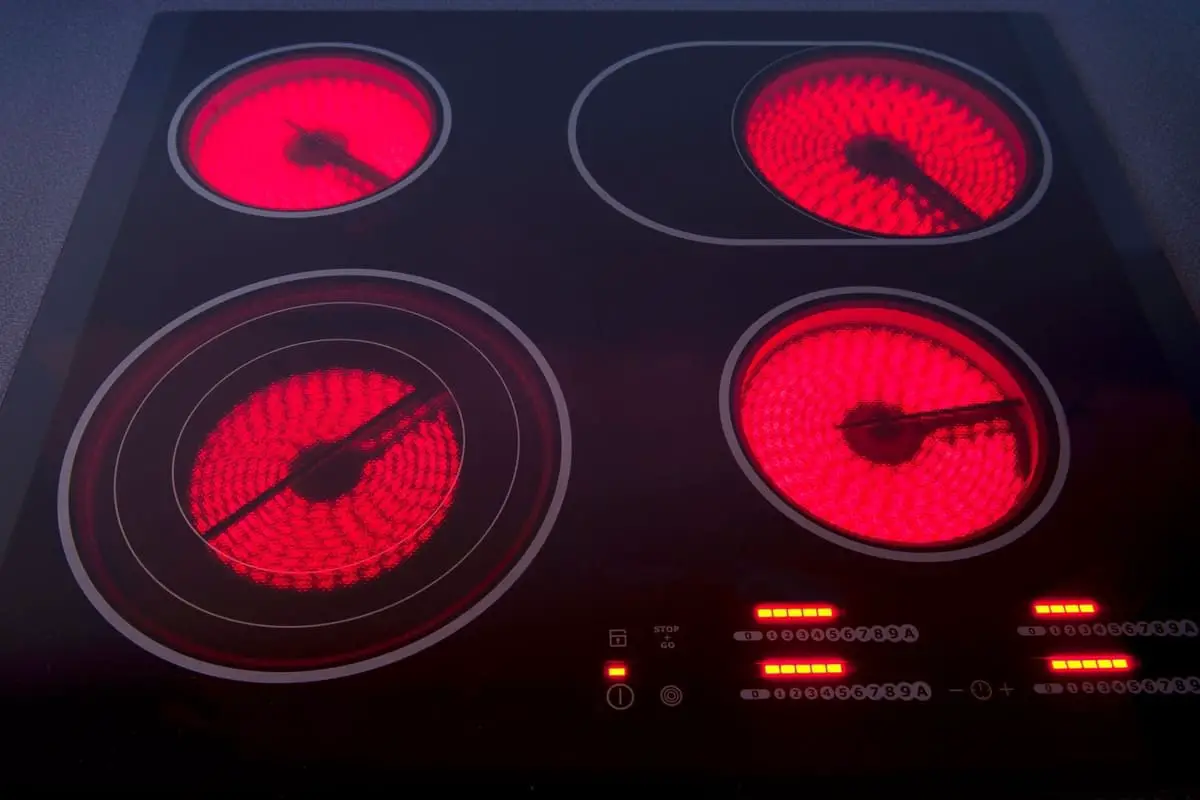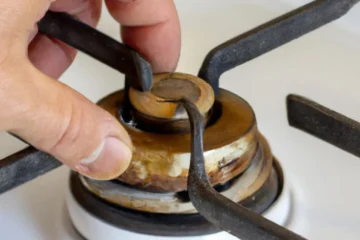Induction stoves have become increasingly popular in recent years due to their efficiency and safety features. But how do they work? Induction stoves use electromagnetic induction to heat up the cookware directly, instead of heating up the surface of the stove. This means that the heat is more precise and can be controlled more easily, making it a popular choice for professional chefs.
When an induction stove is turned on, an alternating electric current passes through copper heating coils installed underneath its flat glass or ceramic surface. This creates a magnetic field that interacts with the iron molecules in the cookware, causing them to vibrate and generate heat. The heat is then transferred directly to the food, making the cooking process faster and more efficient. Additionally, since the heat is generated in the cookware itself, the surface of the stove remains cool to the touch, reducing the risk of accidental burns.
What is an Induction Stove?
An induction stove is a type of electric stove that uses electromagnetic induction to heat up cookware. Unlike traditional electric or gas stoves, induction stoves do not use a heating element to transfer heat to the cookware. Instead, they use a magnetic field to create an electrical current in the cookware, which generates heat.
The Basics of Induction Cooking
Induction cooking works by creating an electromagnetic field between the cookware and the stove’s induction coil. When the cookware is placed on the stove, the magnetic field induces an electrical current in the cookware, which generates heat. The heat is then transferred to the food inside the cookware.
One of the benefits of induction cooking is that it heats up the cookware quickly and efficiently. Because the heat is generated directly in the cookware, there is no need to preheat the stove. Induction stoves also offer precise temperature control, allowing you to cook food at a specific temperature without the risk of overheating.
Another benefit of induction cooking is that it is safer than traditional electric or gas stoves. Because the heat is generated directly in the cookware, the stove surface remains cool to the touch, reducing the risk of burns. Additionally, induction stoves automatically shut off when the cookware is removed from the stove, reducing the risk of accidental fires.
However, it’s important to note that not all cookware is compatible with induction stoves. Only cookware made from magnetic materials, such as cast iron or stainless steel, will work with induction stoves. Cookware made from aluminum, copper, or glass will not work.
How Does an Induction Stove Work?
An induction stove is a modern appliance that uses electromagnetic induction to heat cookware. It works differently from traditional gas and electric stoves, and has several advantages over them. In this section, we’ll explore how an induction stove works, the science behind it, and the components that make it possible.
The Science Behind Induction Cooking
Induction cooking works by creating a magnetic field that induces an electric current in the cookware. This current generates heat, which cooks the food. The key to this process is the use of magnetic materials in the cookware. When the magnetic field interacts with the cookware, it creates a flow of electrons that generates heat.
The Components of an Induction Stove
An induction stove has several components that work together to create the magnetic field and heat the cookware. These components include:
- Power Supply: The power supply provides the electrical energy needed to create the magnetic field. It converts the AC power from the wall outlet to the high-frequency AC power needed for induction cooking.
- Coil: The coil is a copper wire that is wound into a spiral shape. When electricity flows through the coil, it creates a magnetic field.
- Control Circuit: The control circuit regulates the power supply to control the strength of the magnetic field. It also monitors the temperature of the cookware to prevent overheating.
The Cooking Process on an Induction Stove
To cook on an induction stove, you need to use cookware that is compatible with induction cooking. This means that the cookware must be made of a magnetic material, such as cast iron or stainless steel. Once you have the right cookware, you can start cooking by following these steps:
- Place the cookware on the induction stove’s cooking surface.
- Turn on the stove and select the desired temperature.
- The stove will create a magnetic field that induces an electric current in the cookware.
- The cookware will heat up, and the food inside will start cooking.
- Adjust the temperature as needed to cook the food to perfection.
Induction cooking is faster and more efficient than traditional gas and electric cooking. It heats up faster, uses less energy, and provides precise temperature control. With an induction stove, you can cook your meals more quickly and enjoy better results.
Advantages of Using an Induction Stove
An induction stove is a modern cooking appliance that uses electromagnetic energy to heat cookware. Unlike traditional gas and electric stoves, induction stoves have several advantages that make them a popular choice among homeowners.
Energy Efficiency
Induction stoves are highly energy efficient. They use up to 90% of the energy they consume to heat the cookware, compared to gas and electric stoves which only use 40-50% of their energy. This means that an induction stove can cook food faster and use less energy than traditional stoves. Additionally, because the heat is generated directly in the cookware, there is less heat loss, which means less wasted energy and a cooler kitchen.
Speed and Precision
Induction stoves heat up quickly and provide precise temperature control. They can boil water in half the time of a gas stove and can be adjusted to a specific temperature, making them ideal for cooking delicate dishes that require precise temperature control. Induction stoves also cool down quickly, which means less time waiting for the stove to cool before cleaning.
Safety
Induction stoves are safer than traditional stoves. Because the heat is generated directly in the cookware, the stove surface remains relatively cool, reducing the risk of burns. Additionally, induction stoves have safety features such as automatic shut-off and hot-burner warning lights that alert users to hot surfaces. Induction stoves are also less likely to cause fires because there is no open flame.
Ease of Maintenance
Induction stoves are easy to clean and maintain. Because the surface remains relatively cool, spills and splatters are less likely to burn onto the surface, making them easier to clean. Additionally, because there are no grates or burners, there are fewer parts to clean and maintain.
Disadvantages of Using an Induction Stove
While induction stoves offer many benefits, they also have some disadvantages that should be considered before making a purchase. Here are some of the most significant drawbacks of using an induction stove.
Compatibility with Cookware
One of the most significant disadvantages of induction stoves is that they require specific types of cookware to work. Only pots and pans made of ferrous metals, such as cast iron and stainless steel, can be used with induction stoves. Cookware made of copper, aluminum, or glass will not work on an induction stove. This can be a problem for those who have invested in high-quality cookware that is not compatible with induction cooking.
Cost
Another disadvantage of induction stoves is their cost. Induction stoves are generally more expensive than traditional gas or electric stoves. Additionally, the cost of purchasing new cookware that is compatible with induction cooking can add to the overall expense.
Noise
Induction stoves can also be noisy. The high-energy transfer from the coil to the pan can cause a rattling or whirring sound. While this sound is not harmful, it can be annoying to some users. However, some induction stoves are designed to be quieter than others, so it is essential to research the specific model before making a purchase.
Conclusion
Induction stoves are a modern and efficient way of cooking that use electromagnetic induction to heat pots and pans. They are a safer and more energy-efficient alternative to traditional gas and electric stoves.
Induction stoves are also easy to clean, as there are no grates or burners to clean and no gas or oil spills to worry about. They are also more precise, as the heat is generated directly in the cookware, allowing for better temperature control.
While induction stoves may be more expensive than traditional stoves, they are a worthwhile investment for those who want a safer, more efficient, and more precise cooking experience. Additionally, as technology improves, the price of induction stoves is likely to come down, making them more accessible to a wider range of consumers.
Overall, induction stoves are a great option for those who want a modern, efficient, and safe way of cooking. With their many benefits, it’s no wonder they are becoming increasingly popular in kitchens around the world.



